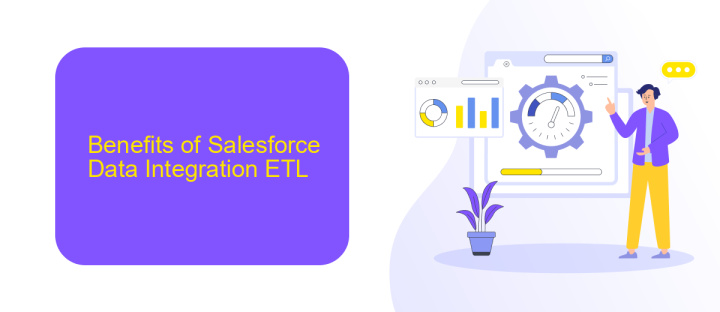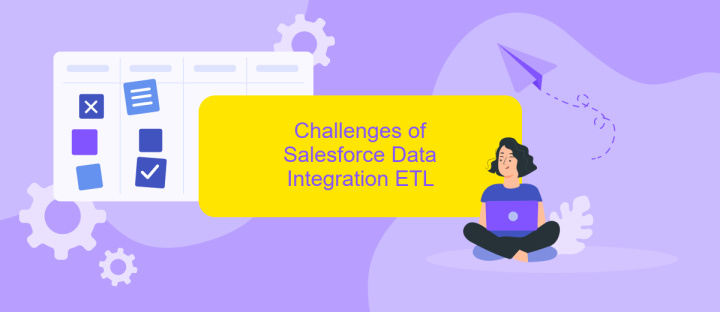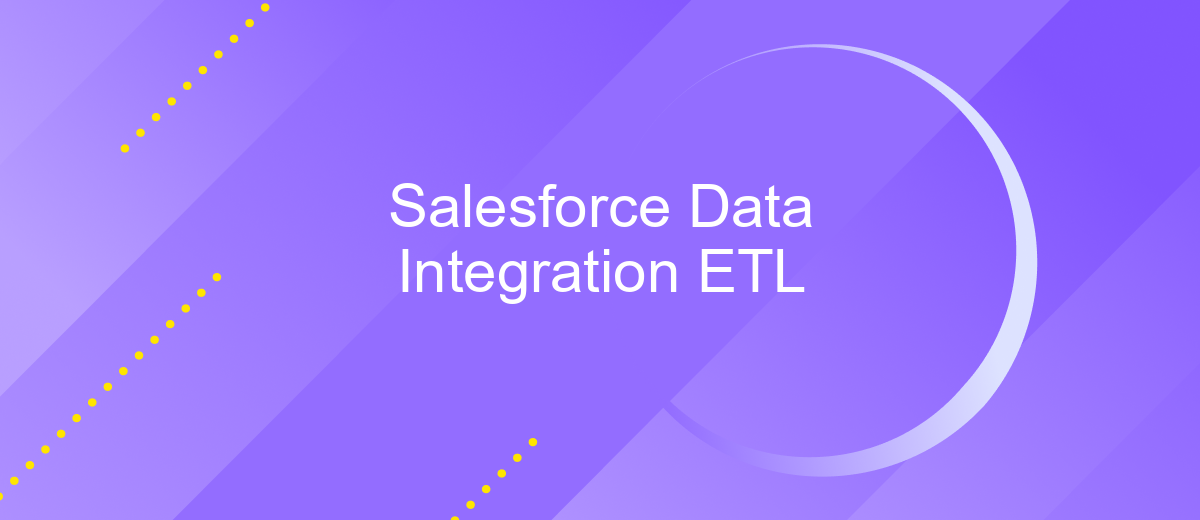Salesforce Data Integration ETL
Salesforce Data Integration ETL (Extract, Transform, Load) is an essential process for businesses aiming to unify data from diverse sources into a single Salesforce platform. This integration ensures seamless data flow, enhances data accuracy, and supports informed decision-making. In this article, we'll explore the key components, benefits, and best practices for implementing ETL processes in Salesforce to maximize operational efficiency.
Introduction
Salesforce Data Integration ETL (Extract, Transform, Load) is a crucial aspect for businesses aiming to streamline their data management processes. By integrating Salesforce with other data sources, organizations can ensure seamless data flow, improved data quality, and enhanced decision-making capabilities.
- Extract: Retrieving data from various sources.
- Transform: Converting the data into a suitable format.
- Load: Inserting the transformed data into a target system.
Tools like ApiX-Drive can simplify the Salesforce data integration process by providing automated workflows and real-time data synchronization. This not only saves time but also minimizes the risk of errors, ensuring that your data is always up-to-date and accurate. By leveraging such tools, businesses can focus more on strategic initiatives rather than getting bogged down by manual data handling tasks.
Benefits of Salesforce Data Integration ETL

Integrating Salesforce with other data sources through ETL (Extract, Transform, Load) processes brings numerous advantages to businesses. One of the primary benefits is the enhancement of data accuracy and consistency. By automating data extraction and transformation, businesses can ensure that all systems are updated with the most current and accurate information, reducing the risk of errors and discrepancies. This leads to more reliable reporting and analytics, enabling better decision-making and strategic planning.
Another significant benefit is the improved efficiency and productivity that comes with streamlined data workflows. Tools like ApiX-Drive simplify the integration process, allowing businesses to connect Salesforce with various applications without extensive coding or manual intervention. This not only saves time but also reduces operational costs. Furthermore, seamless data integration enables real-time data synchronization, ensuring that teams have access to up-to-date information, which is crucial for timely responses and customer satisfaction. Overall, Salesforce data integration through ETL processes enhances operational efficiency, data quality, and business agility.
Challenges of Salesforce Data Integration ETL

Integrating Salesforce with other data sources can be a complex task due to various challenges that arise during the ETL (Extract, Transform, Load) process. These challenges can impact the efficiency and accuracy of data integration, making it essential to address them effectively.
- Data Quality: Ensuring the accuracy and consistency of data from multiple sources can be difficult, leading to potential errors in Salesforce.
- Scalability: Managing large volumes of data in real-time requires scalable solutions that can handle increased loads without compromising performance.
- Compatibility: Different data formats and structures can create compatibility issues, necessitating complex transformations before data can be loaded into Salesforce.
- Security: Protecting sensitive data during the integration process is crucial to prevent unauthorized access and data breaches.
- Maintenance: Continuous monitoring and maintenance are required to ensure the integration remains functional and up-to-date with changing business needs.
To overcome these challenges, using integration services like ApiX-Drive can be highly beneficial. ApiX-Drive simplifies the process by providing automated workflows that streamline data extraction, transformation, and loading, ensuring seamless and secure integration with Salesforce.
Best Practices for Salesforce Data Integration ETL

Effective Salesforce data integration ETL (Extract, Transform, Load) is crucial for maintaining data accuracy and consistency. Start by defining clear objectives and understanding the data flow requirements. This ensures that all stakeholders are aligned and the integration process is streamlined.
Utilize robust tools and platforms to facilitate seamless data integration. For instance, ApiX-Drive offers a user-friendly interface and powerful features to automate data transfers between Salesforce and other systems. This minimizes manual effort and reduces the risk of errors.
- Ensure data quality by implementing validation rules and error handling mechanisms.
- Regularly monitor and audit data integration processes to identify and resolve issues promptly.
- Use incremental data loading to optimize performance and reduce system load.
- Maintain comprehensive documentation for all integration workflows and configurations.
By adhering to these best practices, organizations can achieve efficient and reliable Salesforce data integration ETL. This not only enhances data integrity but also empowers teams to make informed decisions based on accurate and up-to-date information.


Conclusion
In conclusion, Salesforce Data Integration ETL is a crucial process that enables organizations to seamlessly connect and synchronize their data across various platforms. By leveraging ETL tools, businesses can ensure data accuracy, consistency, and accessibility, which are essential for informed decision-making and operational efficiency. The integration process not only streamlines data flow but also enhances the overall data management strategy, allowing for better insights and analytics.
Services like ApiX-Drive play a significant role in simplifying the integration setup, making it easier for businesses to connect Salesforce with other applications. With ApiX-Drive, users can automate data transfers without extensive coding knowledge, thus saving time and reducing errors. This service provides a user-friendly interface and robust features that cater to various integration needs, ensuring a smooth and efficient ETL process. Ultimately, investing in reliable ETL and integration solutions is a strategic move that can drive business growth and innovation.
FAQ
What is Salesforce Data Integration ETL?
Why is ETL important for Salesforce?
What are the common challenges in Salesforce Data Integration ETL?
How can I automate Salesforce Data Integration ETL processes?
What should I consider when choosing an ETL tool for Salesforce?
Apix-Drive is a simple and efficient system connector that will help you automate routine tasks and optimize business processes. You can save time and money, direct these resources to more important purposes. Test ApiX-Drive and make sure that this tool will relieve your employees and after 5 minutes of settings your business will start working faster.

